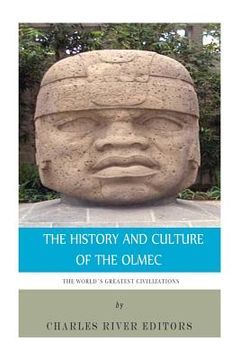The World's Greatest Civilizations: The History and Culture of the Olmec (en Inglés)
Reseña del libro "The World's Greatest Civilizations: The History and Culture of the Olmec (en Inglés)"
*Includes pictures. *Includes a bibliography for further reading. The Olmec people are widely recognized as the first major civilization of Mexico and are thus generally regarded as the mother civilization of Mesoamerica, making them the people from which all subsequent Mesoamerican cultures derived. In fact, the term Olmec is thought to have originated with the Aztec people, as Olmec in their Nahuatl language means "the rubber people", a reference to the inhabitants of the land from which they accessed rubber. By and large, the Olmec culture is perhaps best identifiable by their so-called colossal heads, mammoth basalt head-statues wearing helmet-like headdresses found throughout Olmec habitation sites. Around 2500 B.C., the Olmec settled primarily along Mexico's Gulf Coast in the tropical lowlands of south-central Mexico (in the modern-day States of Veracruz and Tabasco), and they flourished during North America's Prehistoric Indian Formative period from about 1700-400 B.C. Their direct cultural contributions were still evident as late as 300 A.D. Among Mesoamerican scholars, the Formative period is subdivided into the Preclassic (Olmec period), Classic (Maya period), and Postclassic (Toltec and Aztec periods). The Olmec's agricultural abilities sustained them and ensured their power and influence for over a millennium. They produced corn/maize, squash, and other plant foods in such quantities that they were afforded the manpower to build great monuments and ceremonial centers to further promote their cultural identity. From a cultural standpoint, their pyramids, open plazas, their ballgame, and possibly even centers of human sacrifice are thought to have established the societal model that subsequent societies like the Maya, Zapotec, Teotihuacano, Toltec, Mixtec, and Aztec would emulate. In the same vein, some scholars believe that they also affected the cultural development of the Native American groups of the United States and those of Central and South America as well. Proving to be one the most enduring models ever, the religious and cultural structure the Olmec established held reign for over 3,000 years, and it would likely have endured much longer without the arrival of the Spanish conquistadors. The World's Greatest Civilizations: The History and Culture of the Olmec comprehensively covers the history, culture, and lingering mysteries behind the Toltec, profiling their origins and their lasting legacy. Along with pictures depicting important people, places, and events, you will learn about the Olmec like you never have before, in no time at all.

